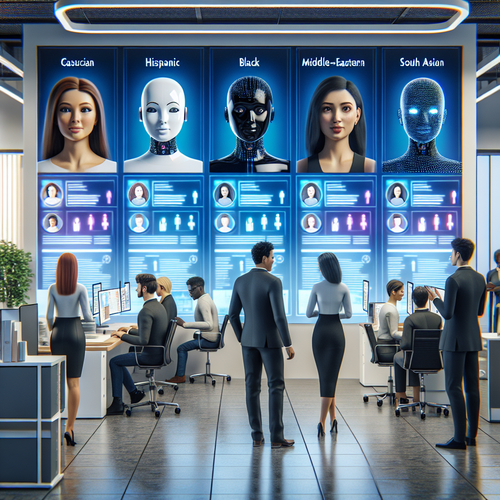
Customizable AI Avatars for Enterprise Customer Support
Customizable AI Avatars for Enterprise Customer Support
In the evolving landscape of customer service, enterprises are continually seeking innovative ways to enhance user engagement and operational efficiency. The introduction of customizable AI avatars is revolutionizing the customer support experience, providing tailored interactions that can significantly improve customer satisfaction.
Prerequisites
- Basic understanding of AI technologies.
- Familiarity with customer service processes.
- An enterprise-level customer support platform.
What are Customizable AI Avatars?
Customizable AI avatars are virtual representations equipped with artificial intelligence capabilities that can interact with customers in various contexts. These avatars can be tailored to reflect brand identity, personality, and specific use cases, offering a more personalized approach to customer support.
Benefits of Implementing AI Avatars
- Enhanced Customer Engagement: By providing a friendly, relatable interface, AI avatars can engage users more effectively compared to traditional support methods.
- 24/7 Availability: AI avatars can operate round the clock, ensuring that customer queries are attended to at any time, improving accessibility.
- Cost-Effectiveness: Automating routine queries with AI avatars reduces the workload on human agents, allowing them to focus on more complex issues.
- Consistent Quality of Service: AI avatars deliver a consistent response quality, eliminating the inconsistencies that can sometimes occur with human representatives.
Step-by-Step Guide to Implementing Customizable AI Avatars
Step 1: Define Your Requirements
Before you implement AI avatars, it is essential to define your needs. Consider the following:
- What specific customer support tasks will the avatars handle?
- What tone and personality should they convey?
- What are the main customer interactions you want to improve?
Step 2: Choose the Right Development Platform
Select a platform that supports the creation of customizable AI avatars. Platforms like Meya AI or AvatarMaker provide tools for designing and deploying these virtual agents.
Step 3: Design the Avatar
Work with a design team to create avatars that align with your company’s branding. Consider various aspects such as:
- Visual appearance
- Voice and tone
- Behavior and responses
Step 4: Train the AI
Utilize machine learning algorithms to train the AI on relevant customer support scenarios. Use data from previous interactions to improve the avatar’s understanding and response accuracy.
Step 5: Integrate with Existing Systems
Integrate the AI avatars with existing customer support platforms, such as CRMs or chat systems, to ensure seamless communication and data flow.
Step 6: Launch and Monitor
Once deployed, monitor the AI avatars’ performance through metrics such as customer satisfaction scores, response times, and engagement levels. Make iterative improvements based on customer feedback.
Troubleshooting Common Issues
- Low Engagement Rates: Assess and modify the avatar’s personality and interaction style to be more engaging.
- Inaccurate Responses: Continuously train the AI with new data and scenarios to enhance its knowledge base.
- Technical Integration Issues: Work closely with IT to troubleshoot any integration problems between systems.
Summary Checklist
- Define specific requirements and goals for AI avatars.
- Select a suitable development platform.
- Design an engaging and relatable avatar.
- Train AI to respond accurately to customer queries.
- Integrate with existing customer support systems.
- Monitor performance and make improvements as needed.
Leveraging customizable AI avatars can be a game changer for enterprises looking to enhance customer support, improving not only efficiency but also ensuring a richer customer experience.














